After a number of nights eating in restaurants, you begin to crave home cooking. On my recent trip to the Southeast, I had the golfing equivalent of that feeling. Then I encountered the Aiken Golf Club, a small-town course that served up a dish of southern soul food so delicious it had to be homemade.
You will find Aiken GC on very few lists. It lives in the shadow of its neighbor Palmetto GC as well as the nearby Sage Valley GC, Augusta CC, and Augusta National. But what makes Aiken stand out from that group is its accessibility, its weekend rate of $25, and its do-it-yourself backstory.
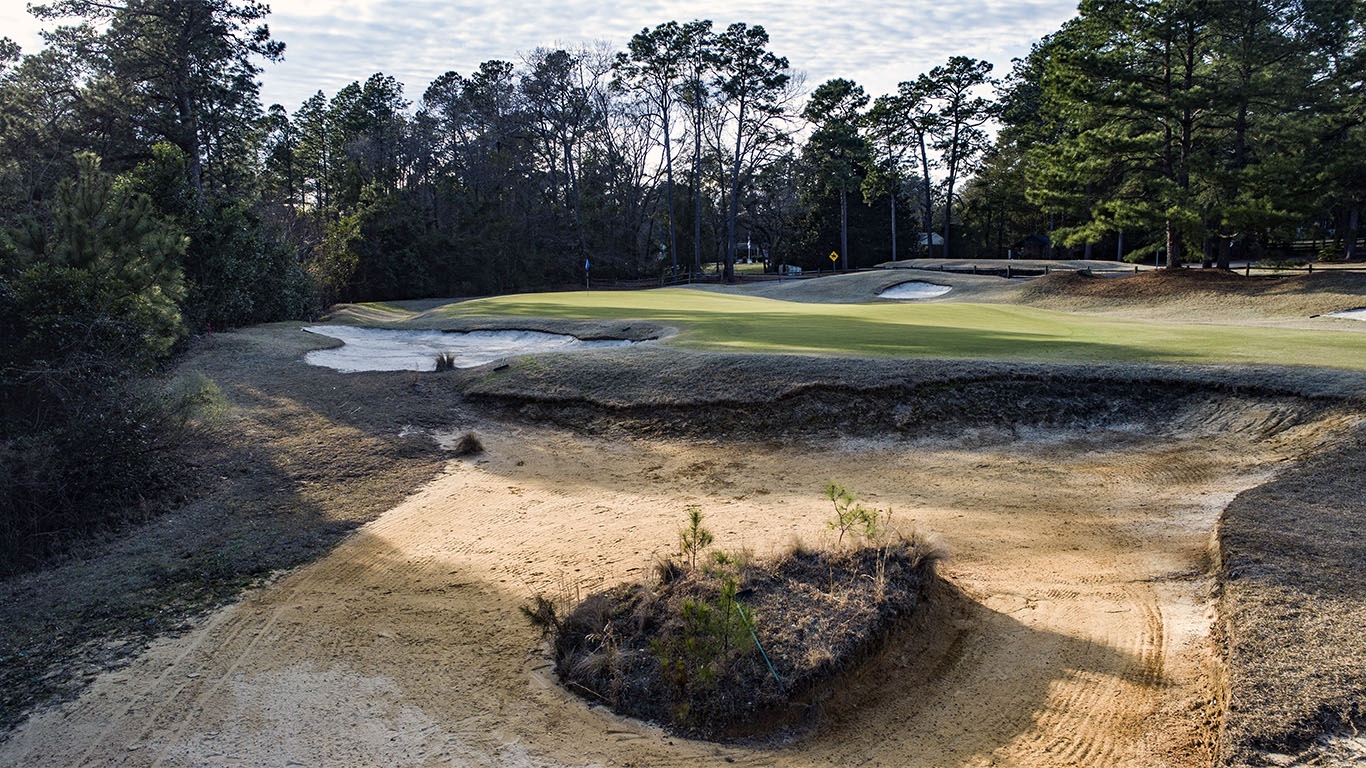
The 5th hole at the Aiken Golf Club
Home cookin’
In 1995, Jim McNair wrote Ben Crenshaw and Bill Coore a number of letters urging them to visit his family’s golf course, the Aiken Golf Club. The pair, who had just started their career in architecture and planned to travel to Aiken to see the famed Palmetto GC, agreed to visit Aiken GC. A missed flight prevented Crenshaw from making the trip, but Coore walked the land with McNair. Deep down, McNair hoped to convince the architects to renovate the property, but Coore saw that McNair didn’t have the budget to afford them or any other architectural firm. At the end of their day at Aiken, Coore told McNair to do the project himself.
A crazy proposition, considering neither McNair nor any member of his small staff had experience in golf course design or construction. Nonetheless, McNair and his grounds crew of three went forward with an in-house renovation. McNair, a long-time architecture buff, recalled the day their bulldozer got delivered. “I had never ridden a bulldozer before,” he says, “but I purchased a Cat D5 bulldozer. It rolled off the trailer, and it took me about a day to learn how to shape. And we were off and running.”
Clearly he was a natural. “McNair’s a Scottish name,” he adds, half-joking. “Maybe one of my ancestors built golf courses.”
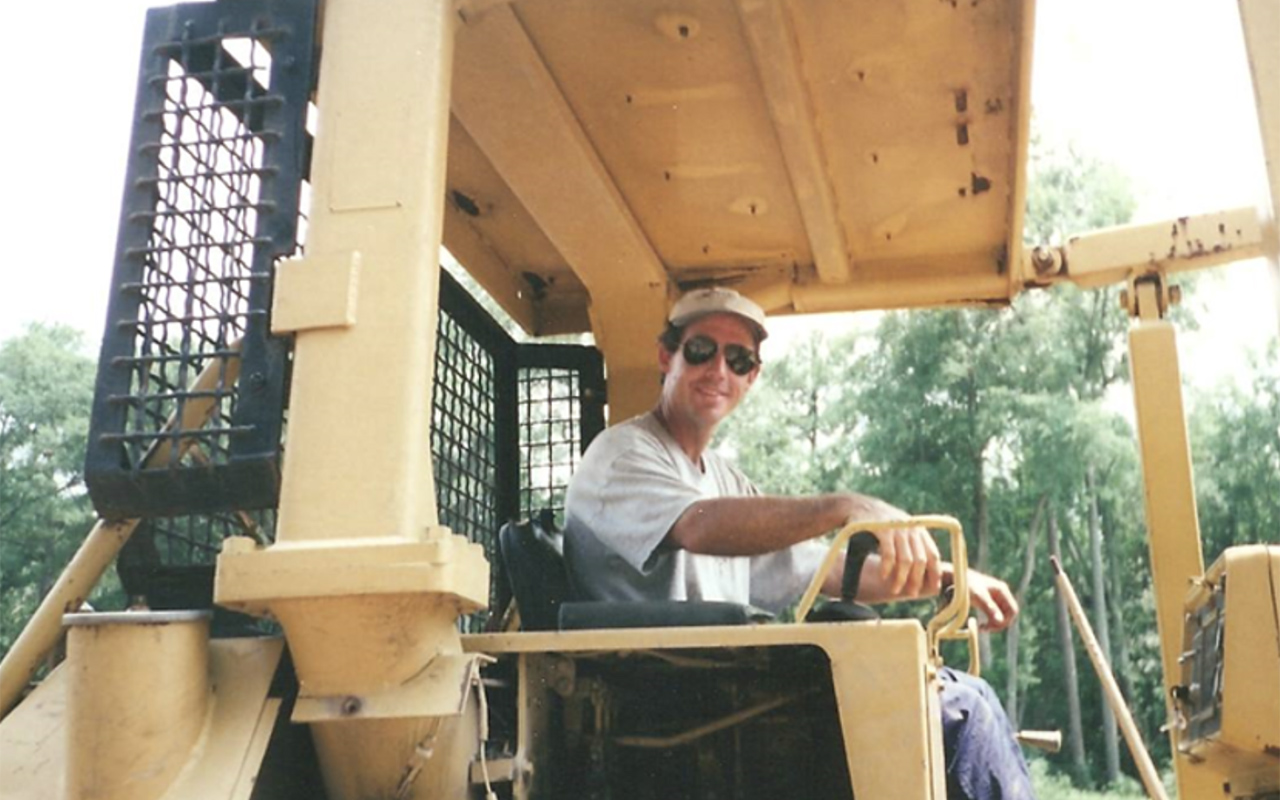
Jim McNair on his D5 bulldozer during Aiken's renovation. Credit: Aiken GC
Four years later, Aiken Golf Club finished a remarkable transformation. Nearly 10,000 trees were removed, new irrigation installed by McNair himself, and every green reworked. The renovation breathed life into a course that had already gone through a great deal of change.
-
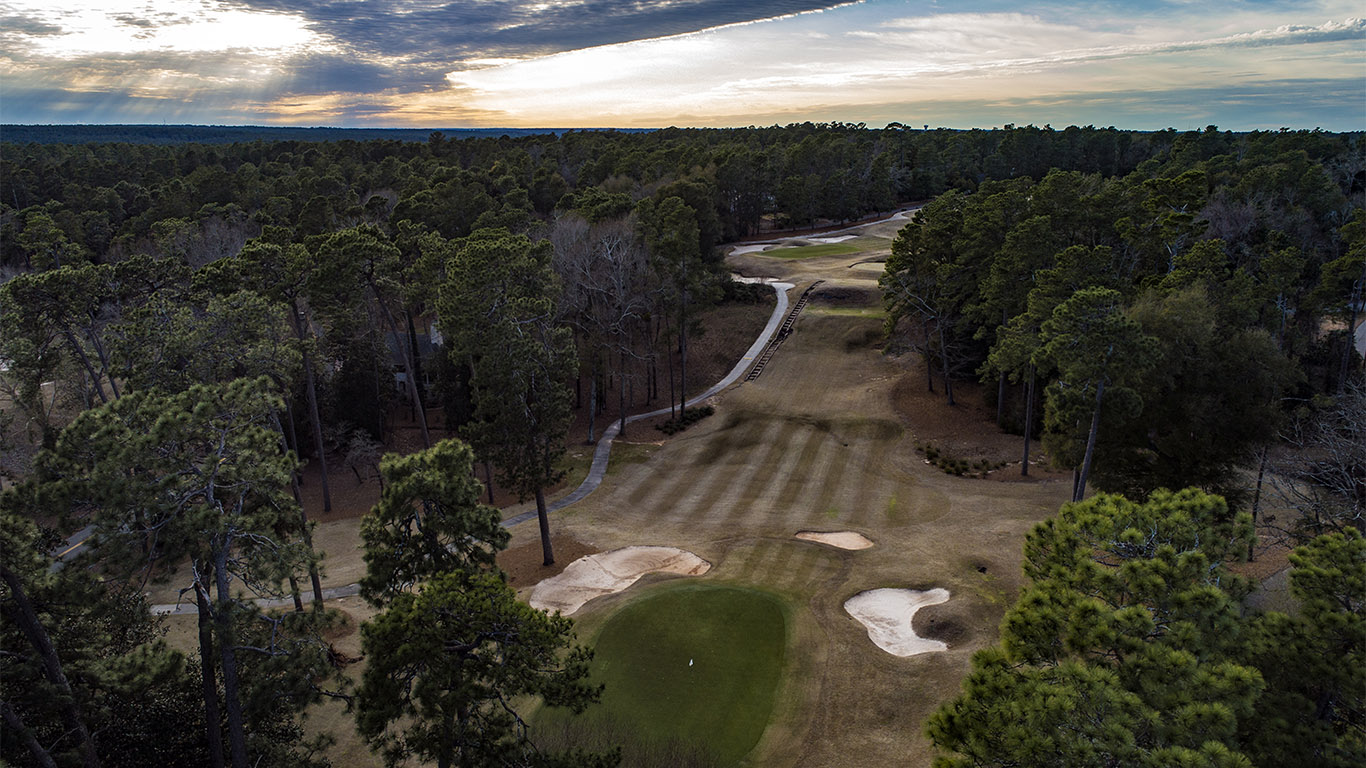
The 16th and 15th at Aiken
-
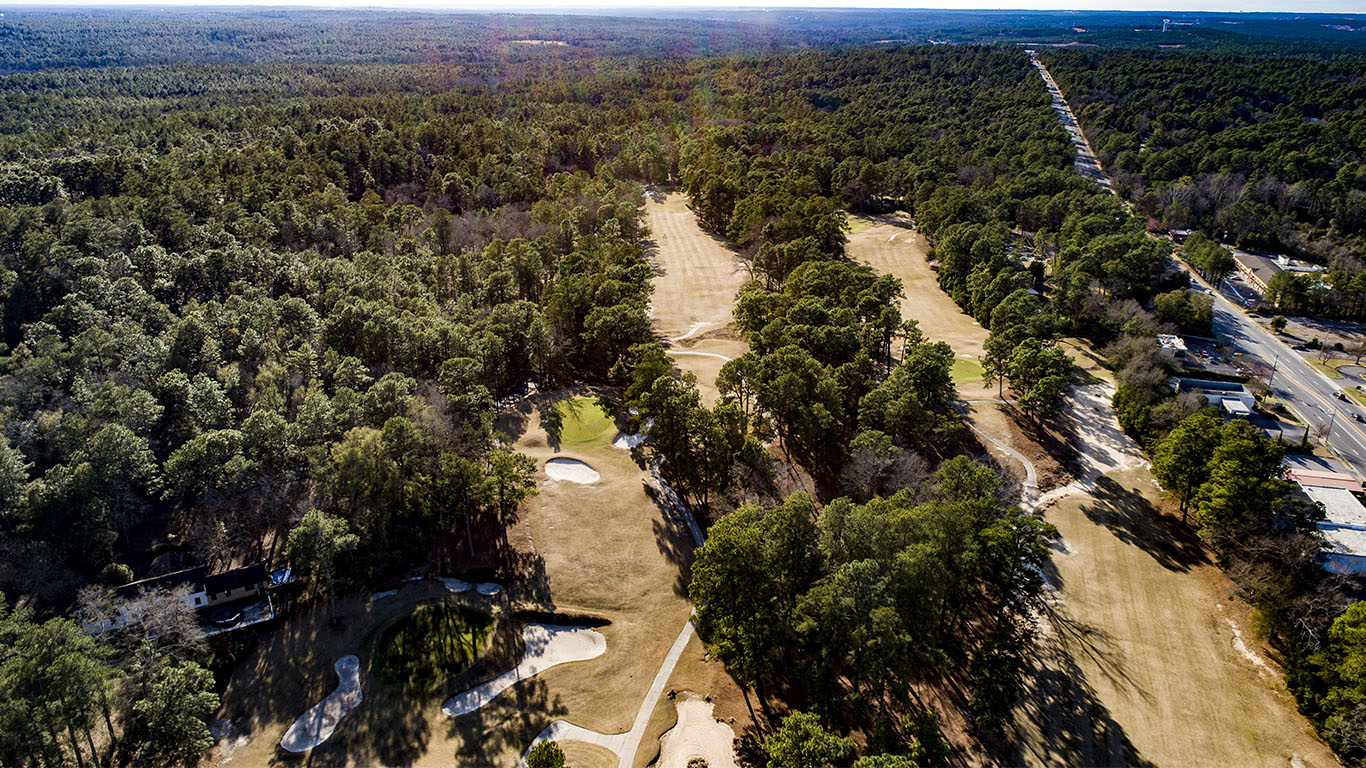
9-10-11-12-13
-
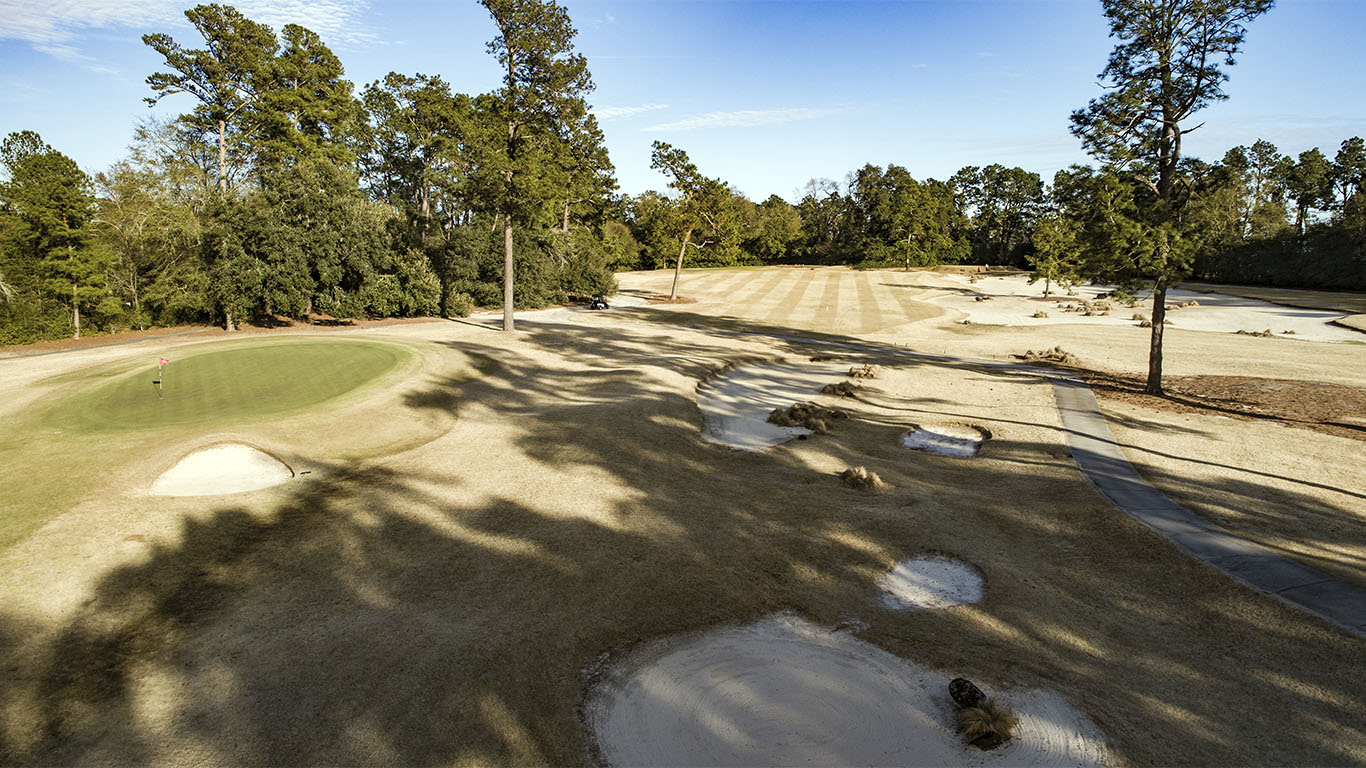
13-14
-
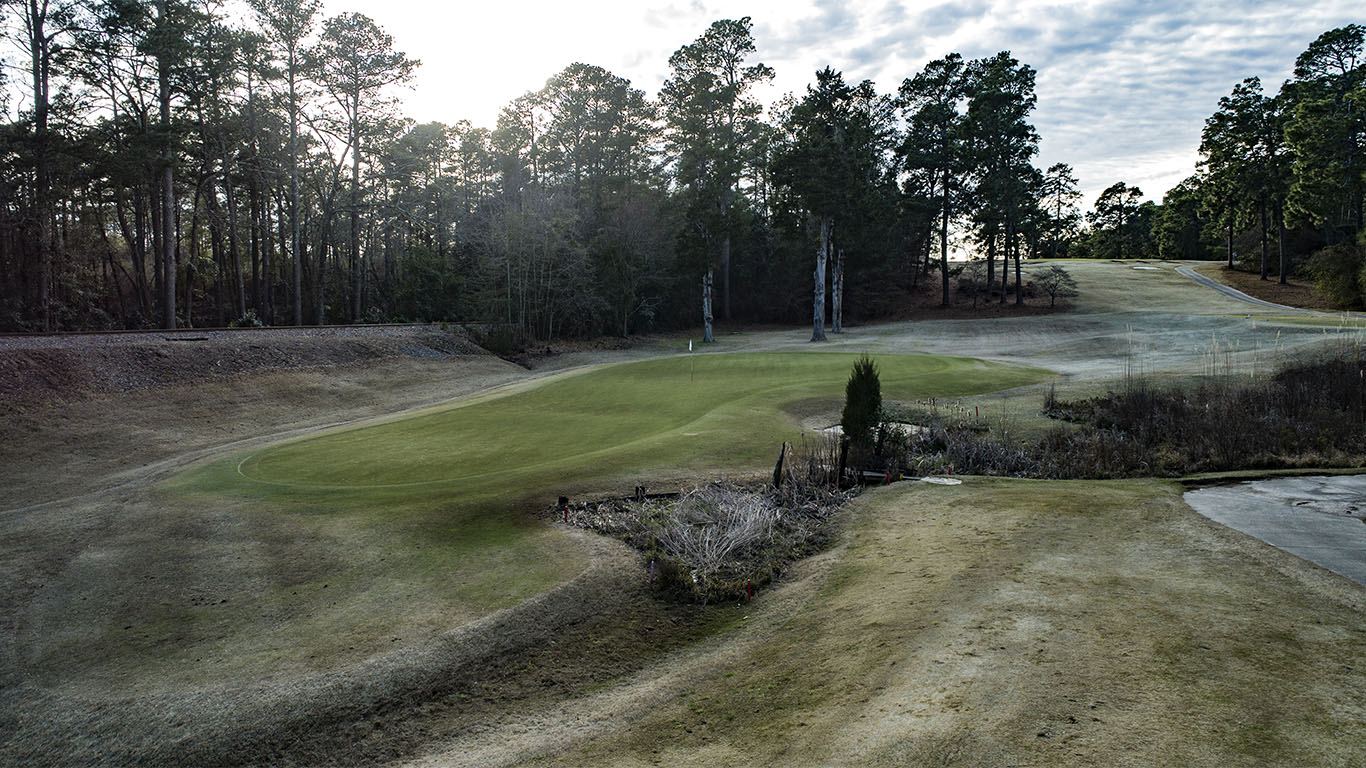
The 3rd and 4th
-
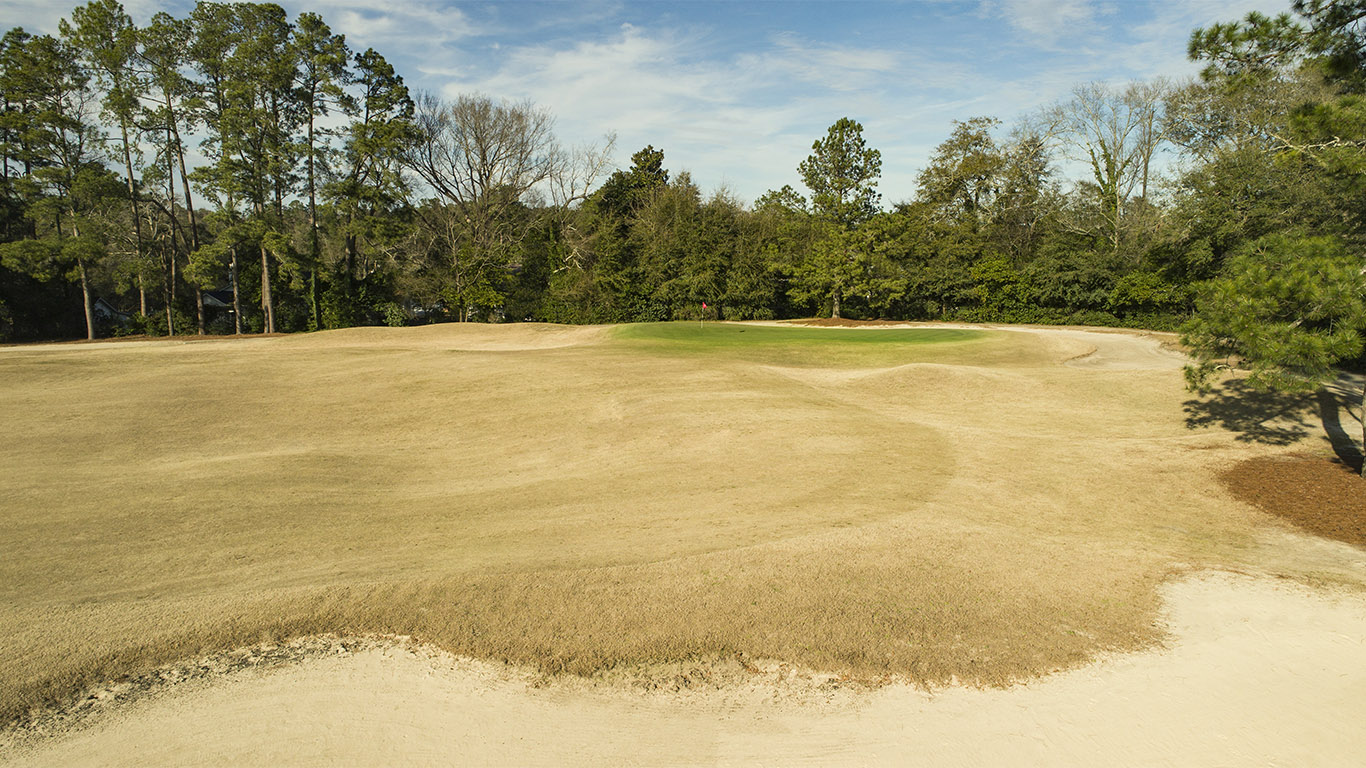
-
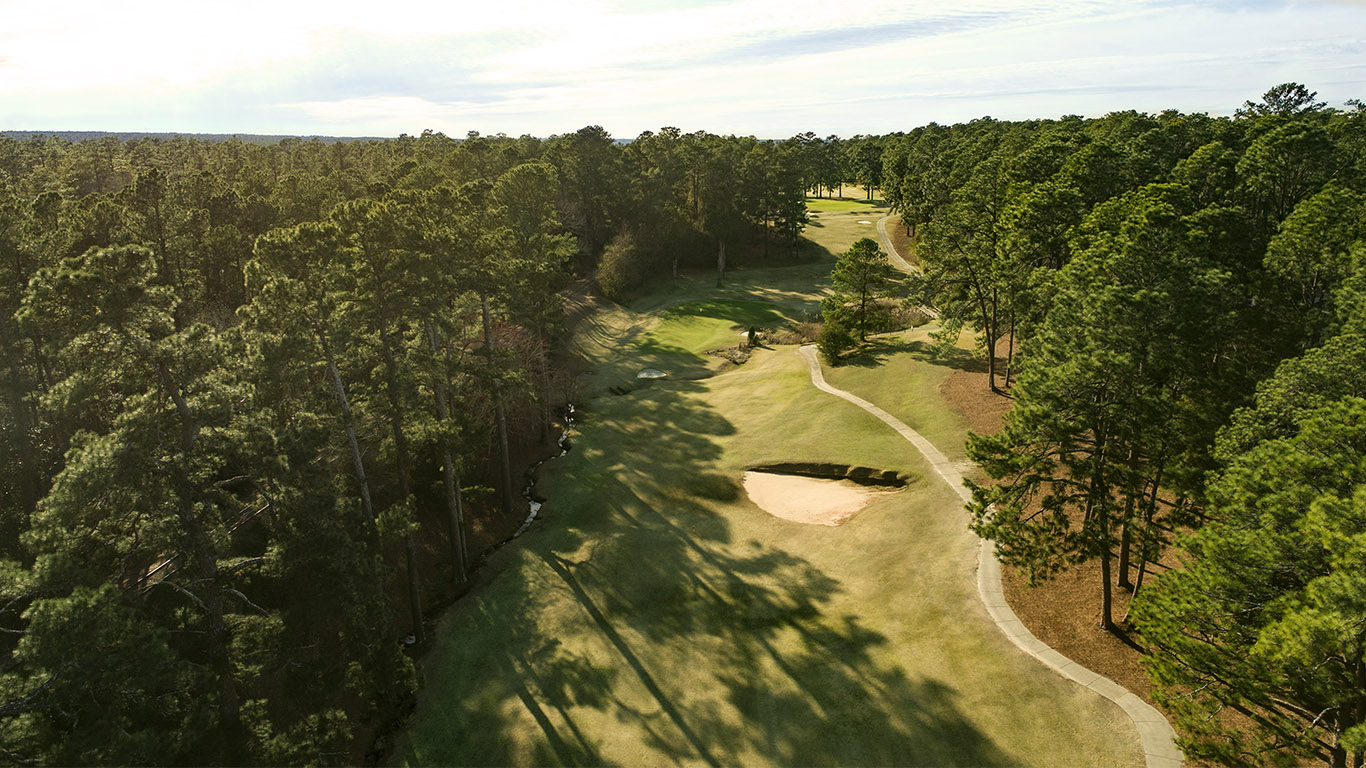
-
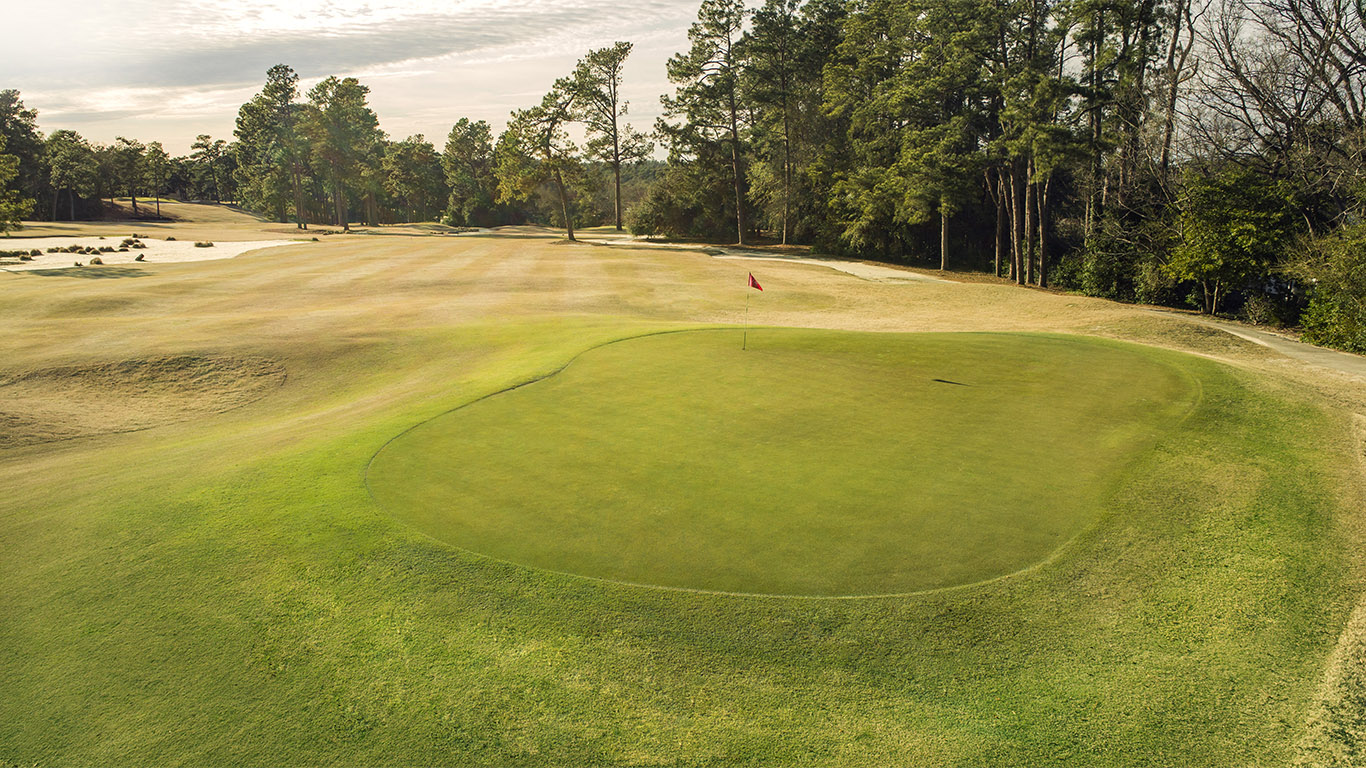
-
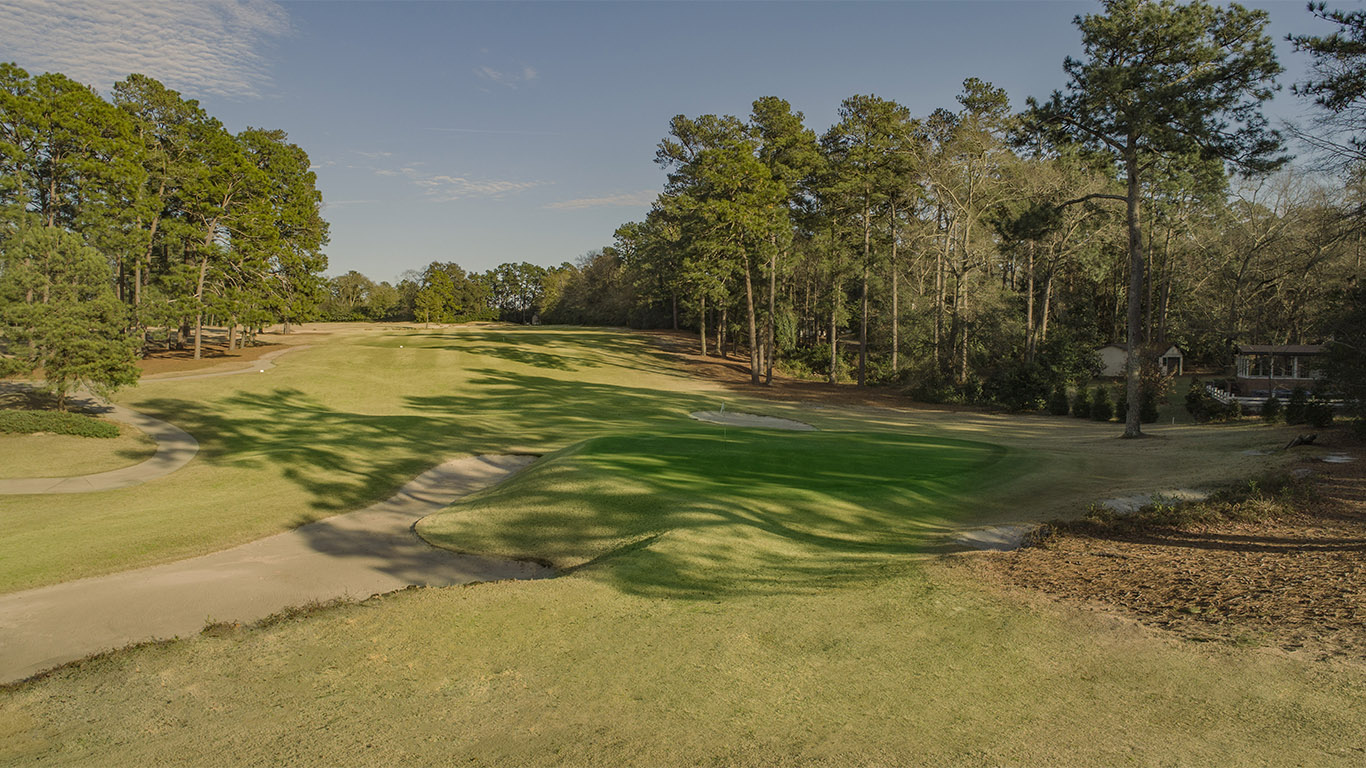
-
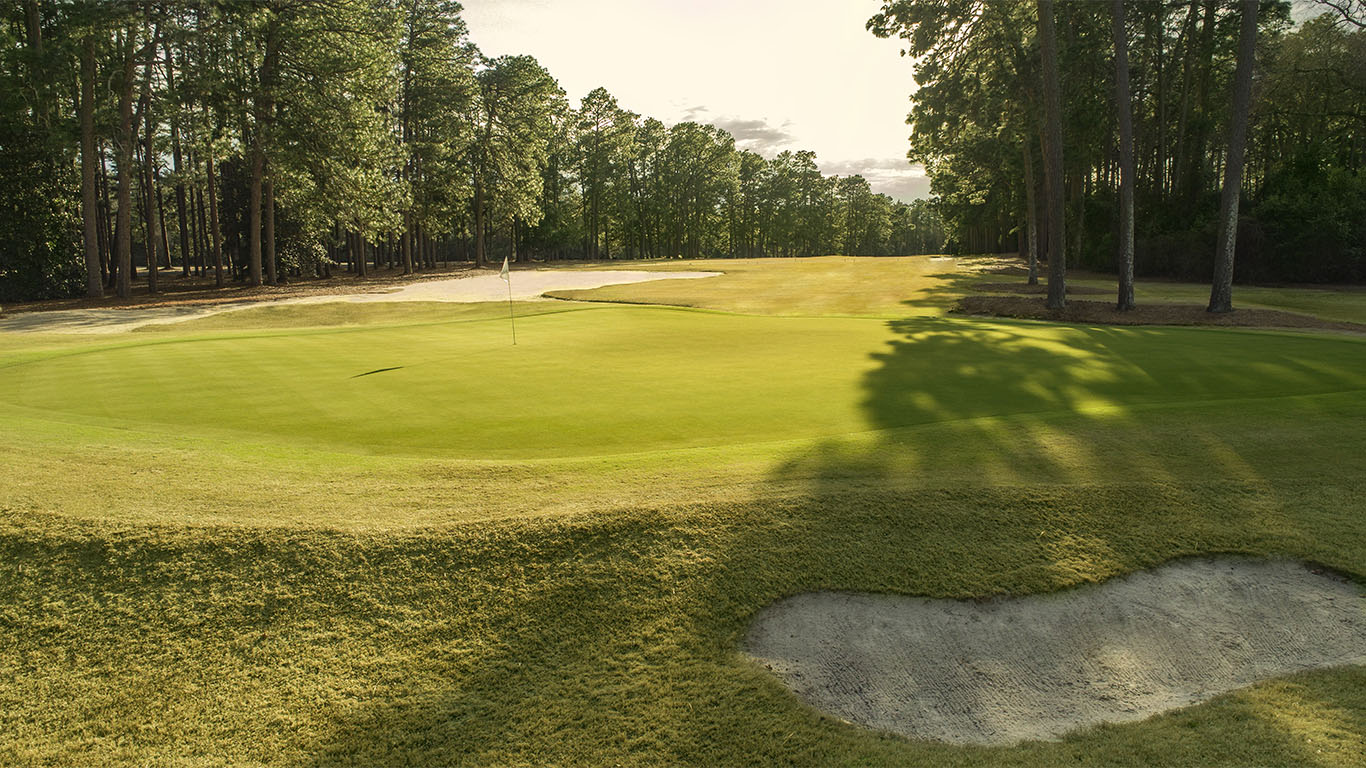
-
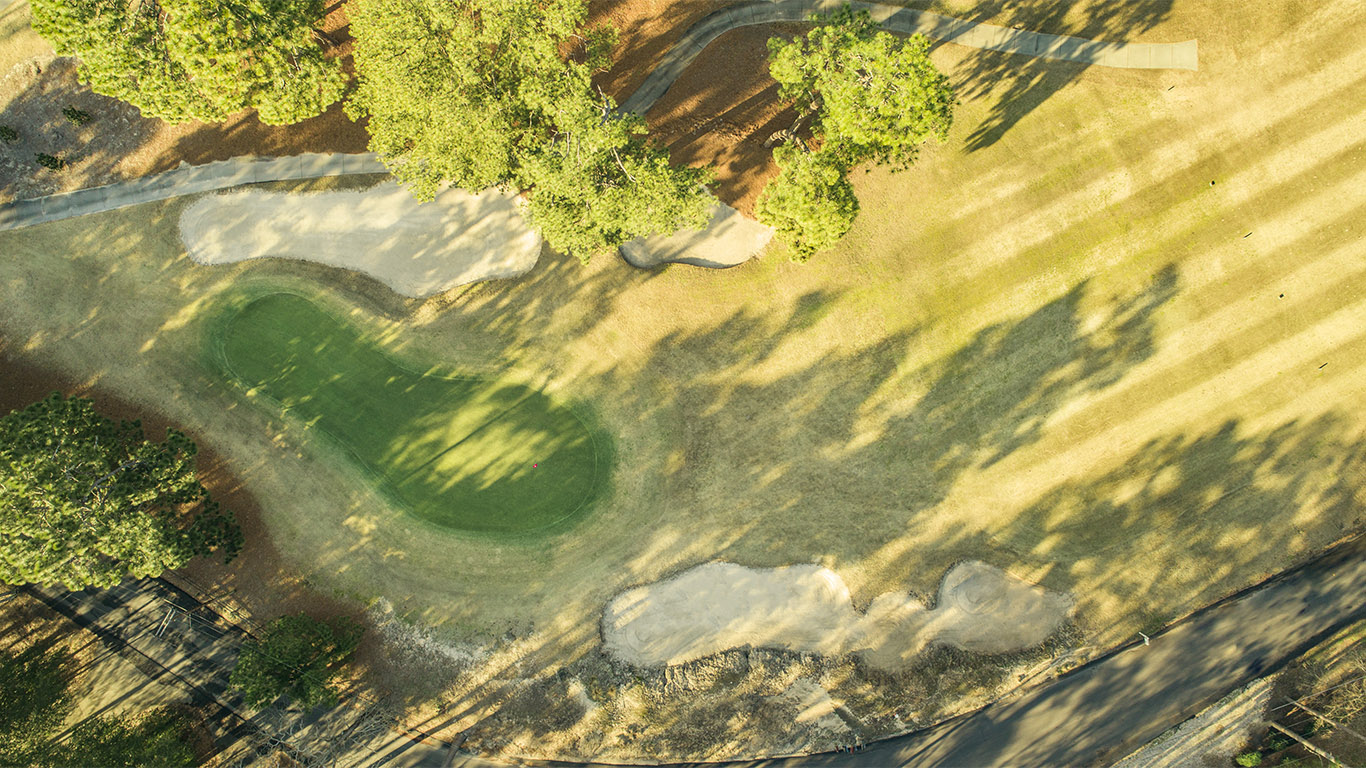
-
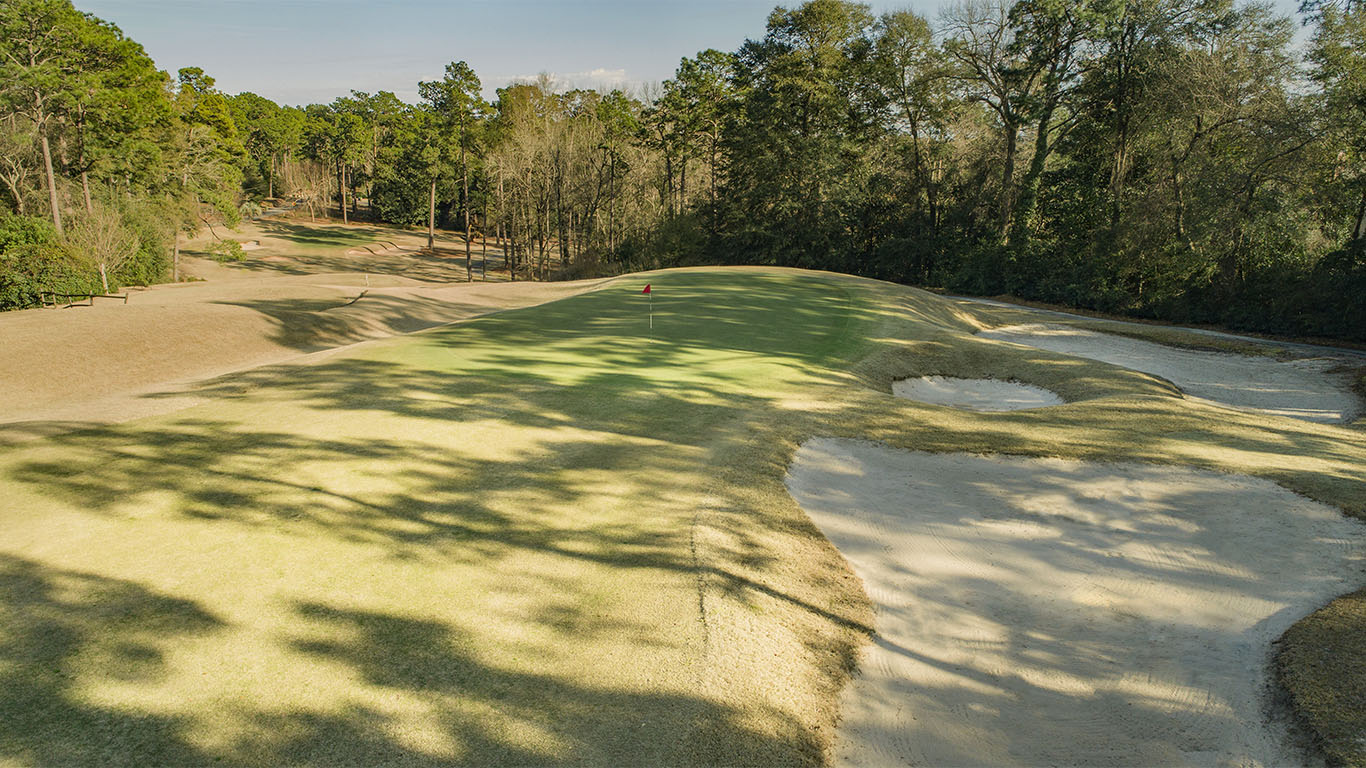
-
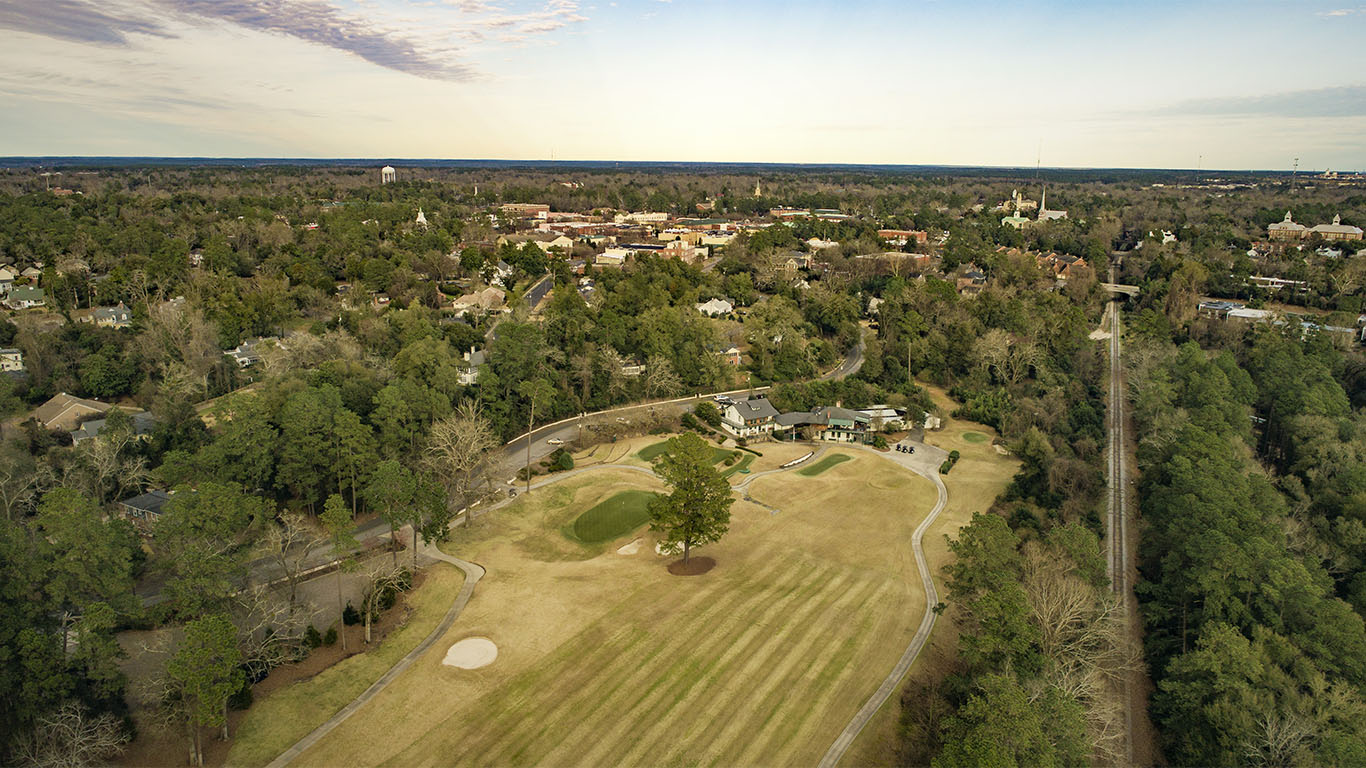
-
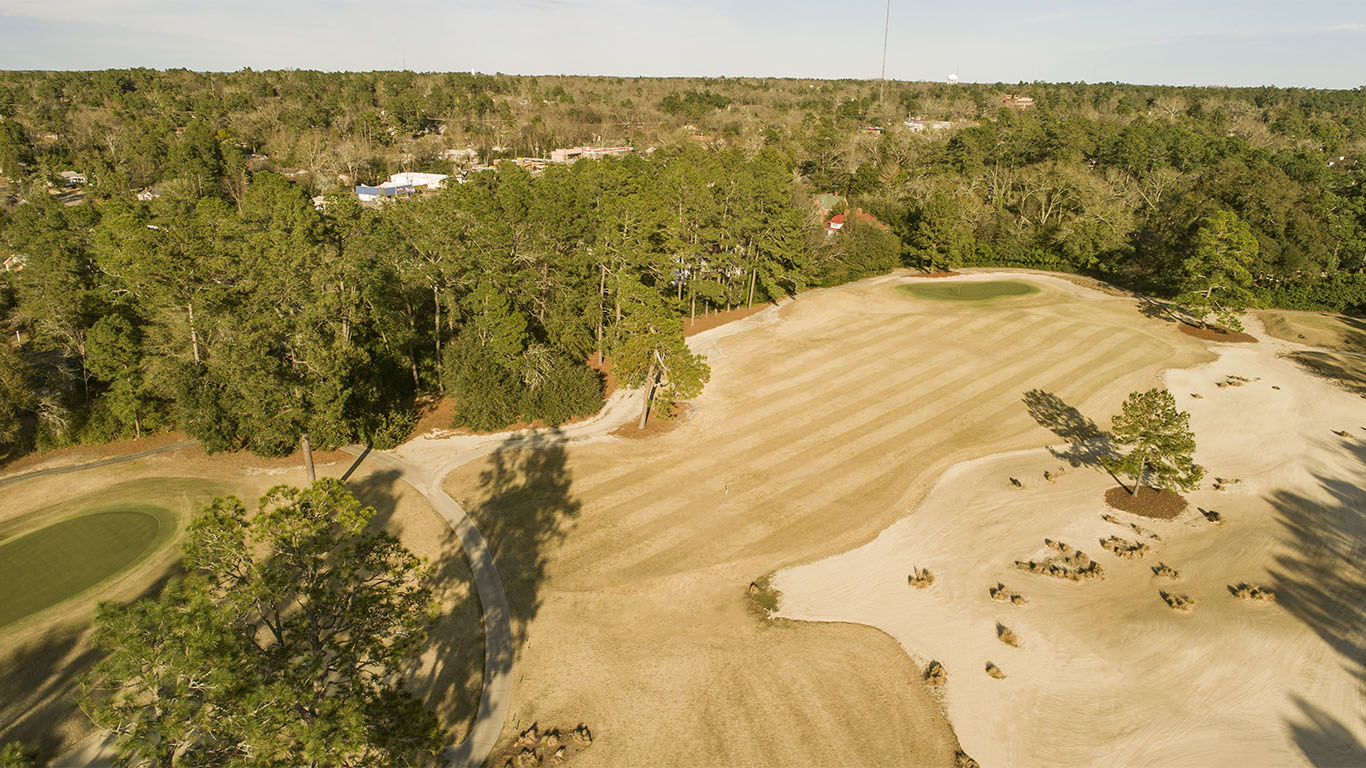
-
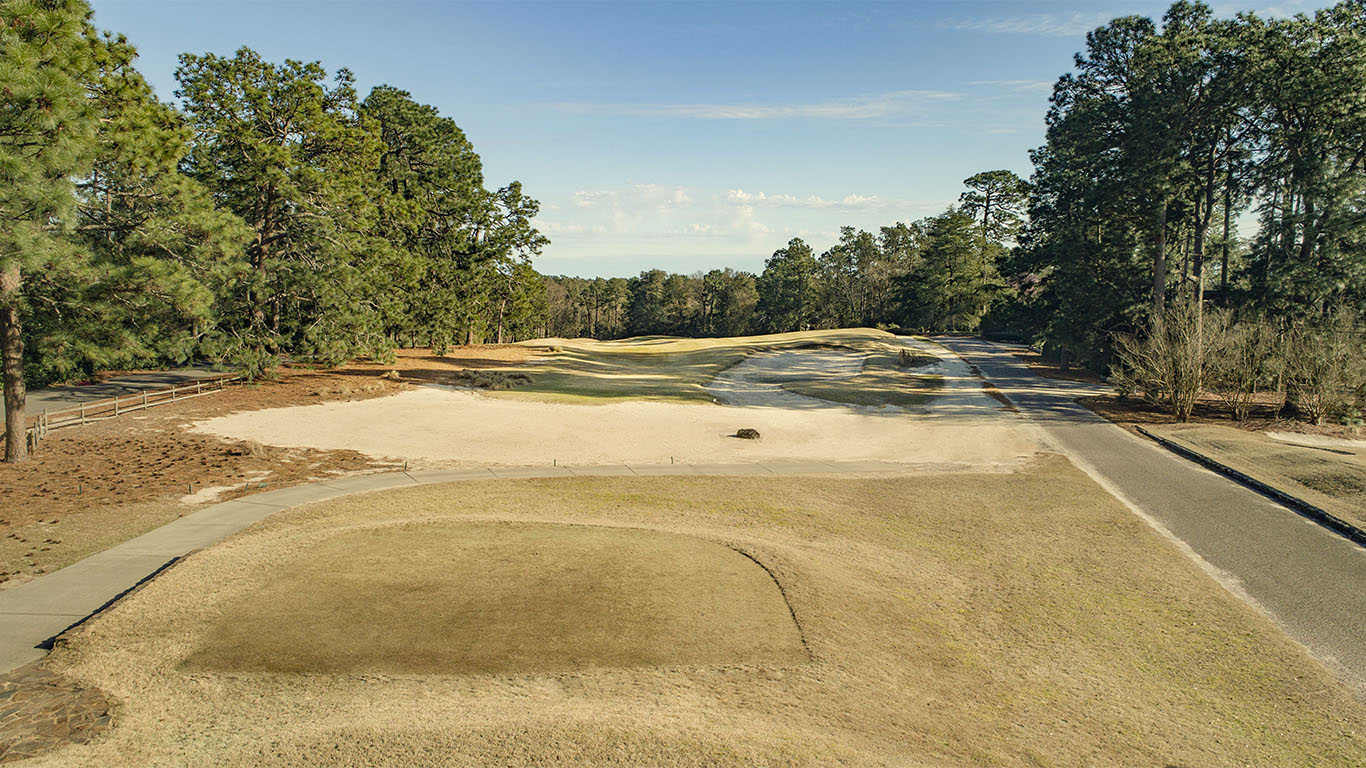
-
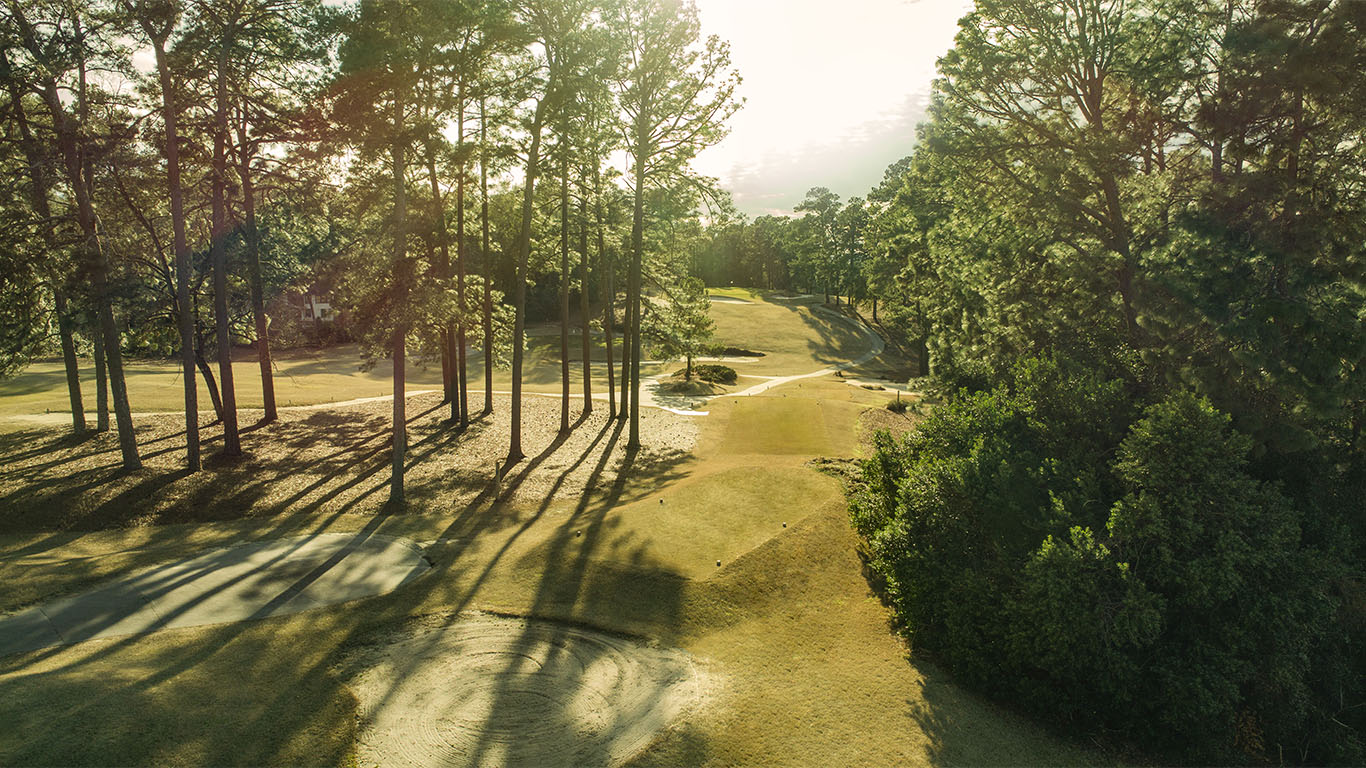
-

-
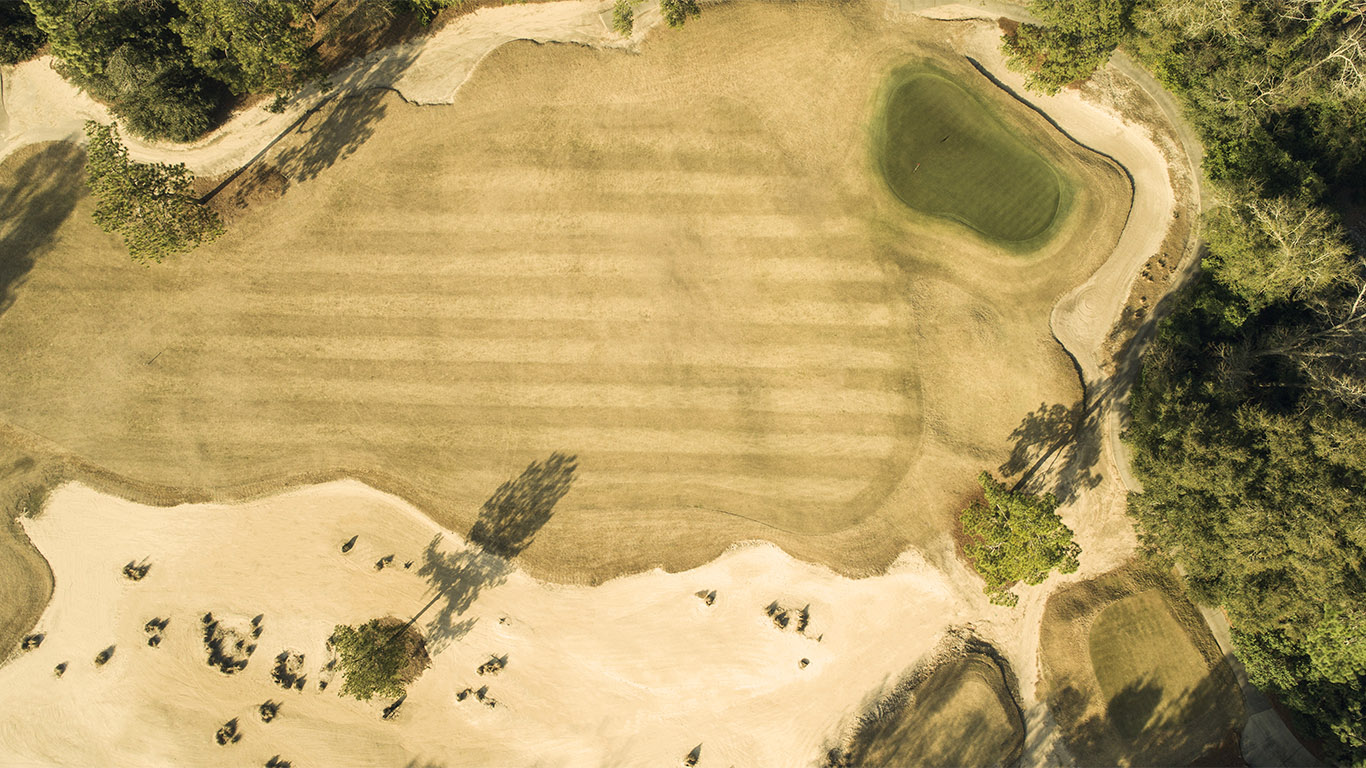
-

-
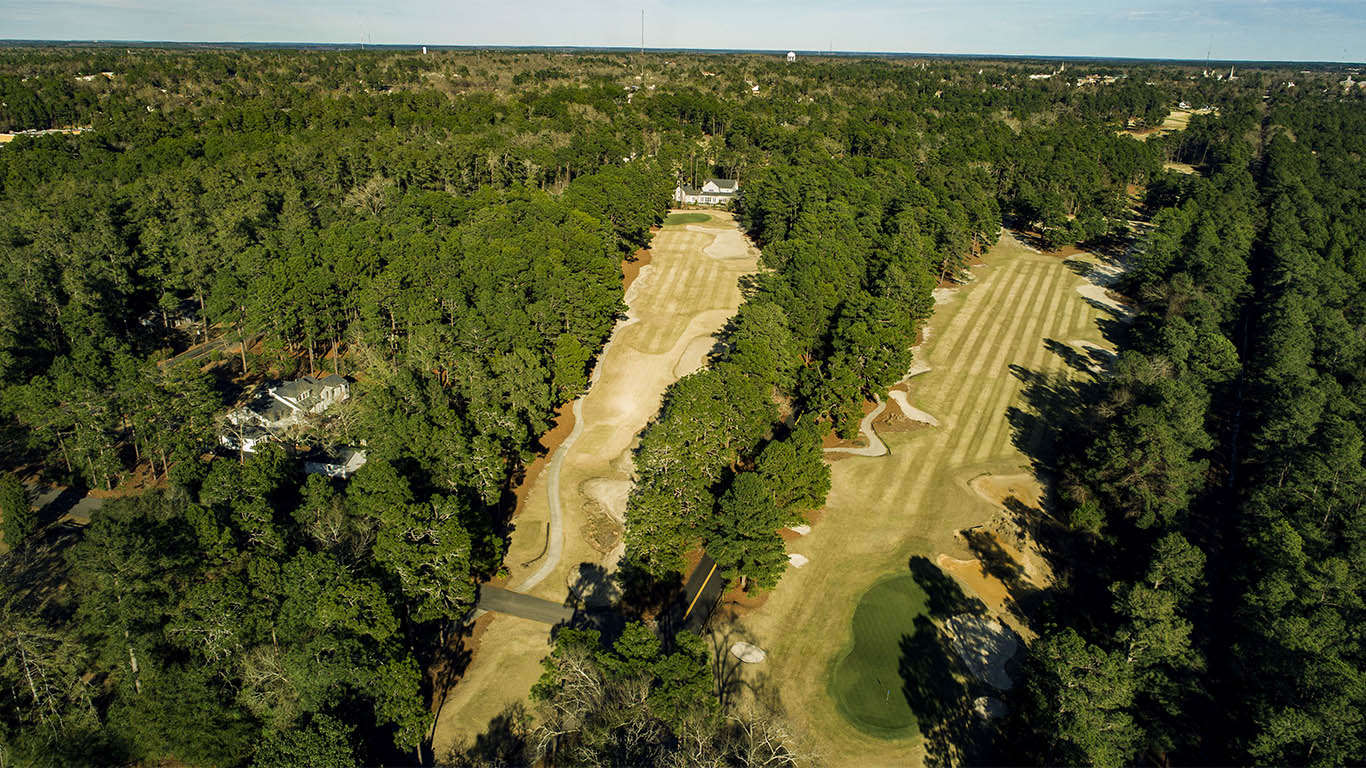
-
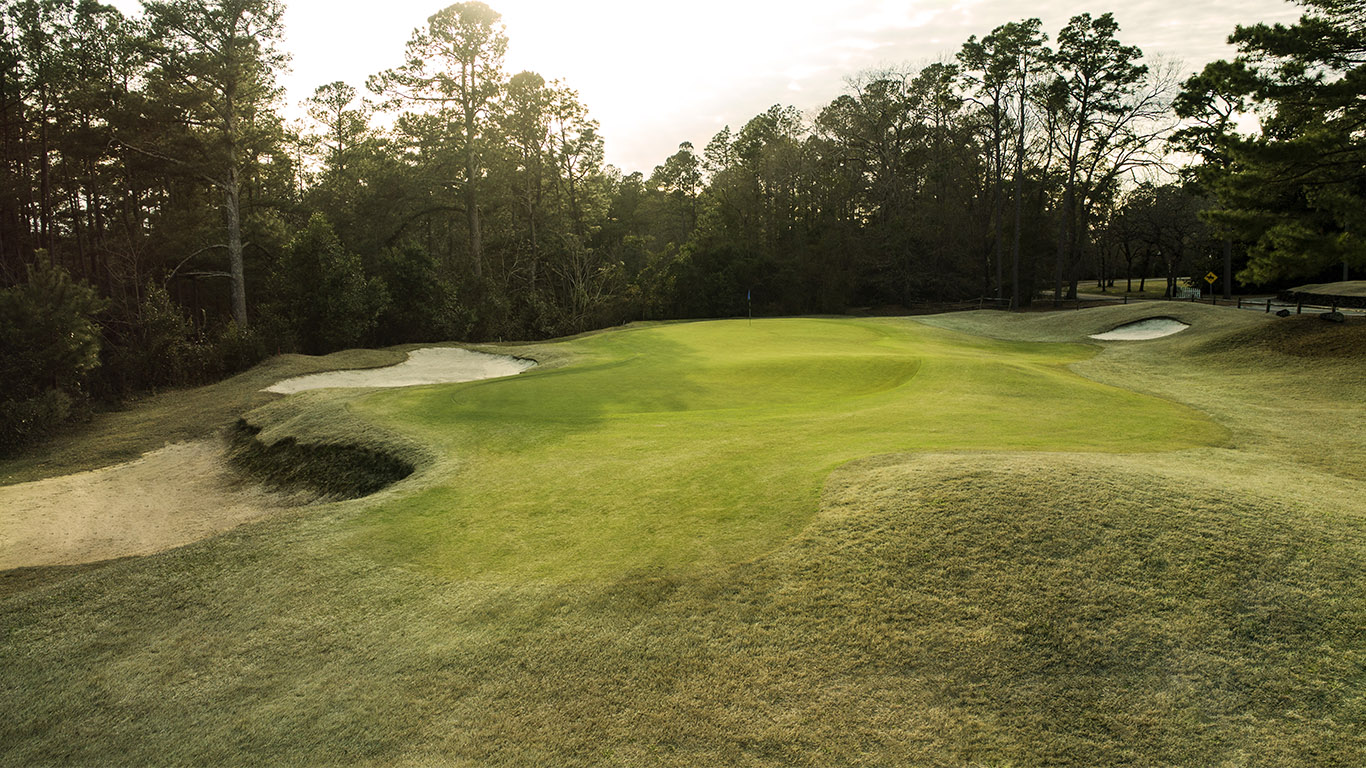
Aiken GC’s history reflects the ebbs and flows of American golf through the years. In its early days (1912-1930s), when it was linked with the Highland Park Hotel, the course boomed as part of a high-end winter destination. It boasted a Donald Ross-J.R. Ingles design that impressed rich and famous visitors from the Northeast. The Depression made for tough times in the resort business, however. The hotel shut down, and the course, thanks to support from a few locals, survived as Aiken’s municipal course.
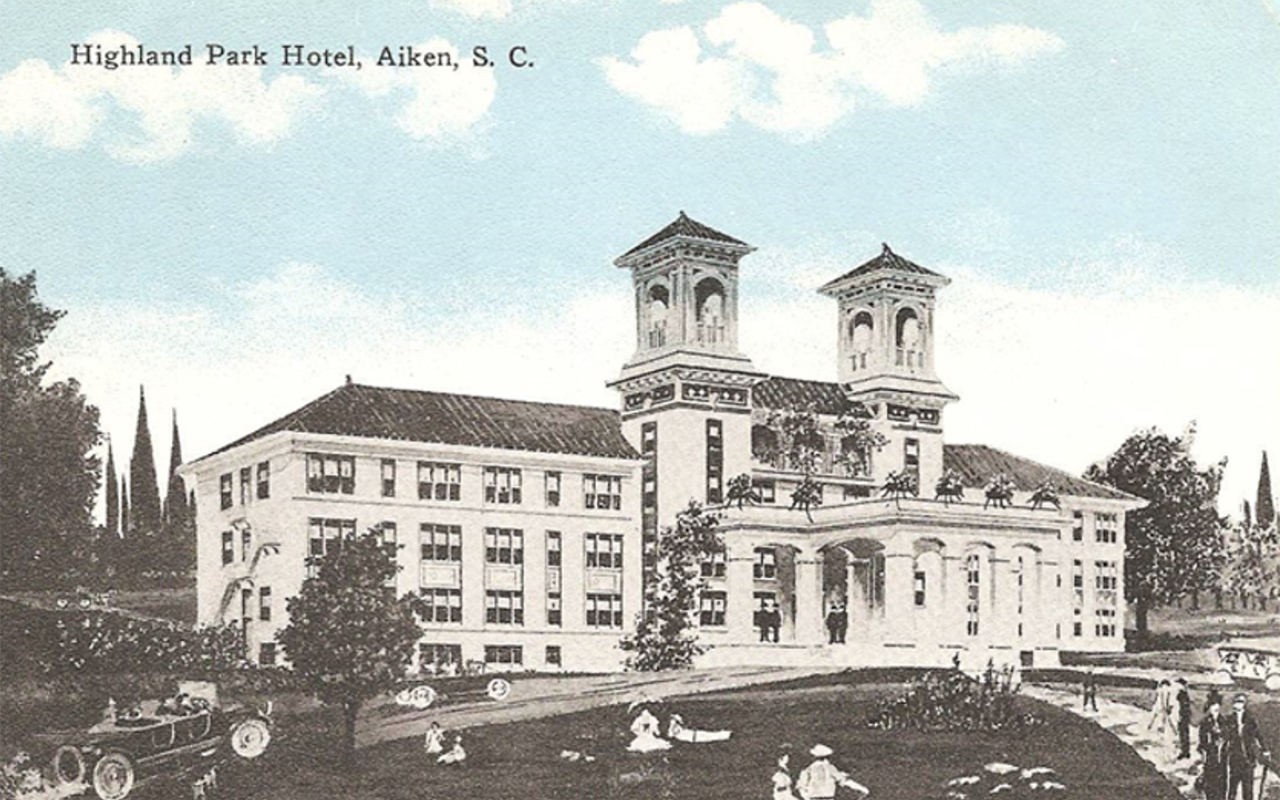
The Highland Park Hotel. Credit: Aiken GC
In 1959, James McNair (Jim’s father) fulfilled his lifelong dream of owning a golf course. McNair purchased Aiken GC, where he set the course record (58) a decade earlier, and turned it into a full-service private country club.
The real estate boom in the 1980s and 90s changed golf again and forced Aiken GC to adapt. Lots of new courses were popping up, featuring a modern style of architecture and a larger budget. Aiken could no longer compete with residential country clubs, forcing the McNairs to switch to a semi-private model, which it retains today.
The course
Aiken breaks many norms associated with public golf in America. Even with one foot in the rough on every tee, Aiken stretches to a mere 5800 yards. The front nine doesn’t return to the clubhouse. It rarely takes more than four hours to play 18 holes. Players will seldom find a flat lie in the fairway, and the greens are small, undulating, and distinct from one another. The course has sandy waste areas that upscale private courses would fawn over. It’s charming, quirky, and inclusive, and it is a thread in the fabric of its town. Overall, the style of golf at Aiken GC has more of a UK ethos than an American one.
Built on pure sand, Aiken makes up for its diminutive yardage with an elegant piece of rolling topography. Over 18 holes, Aiken would put even the best players in the world in uncomfortable positions with uneven lies and vexing greens.
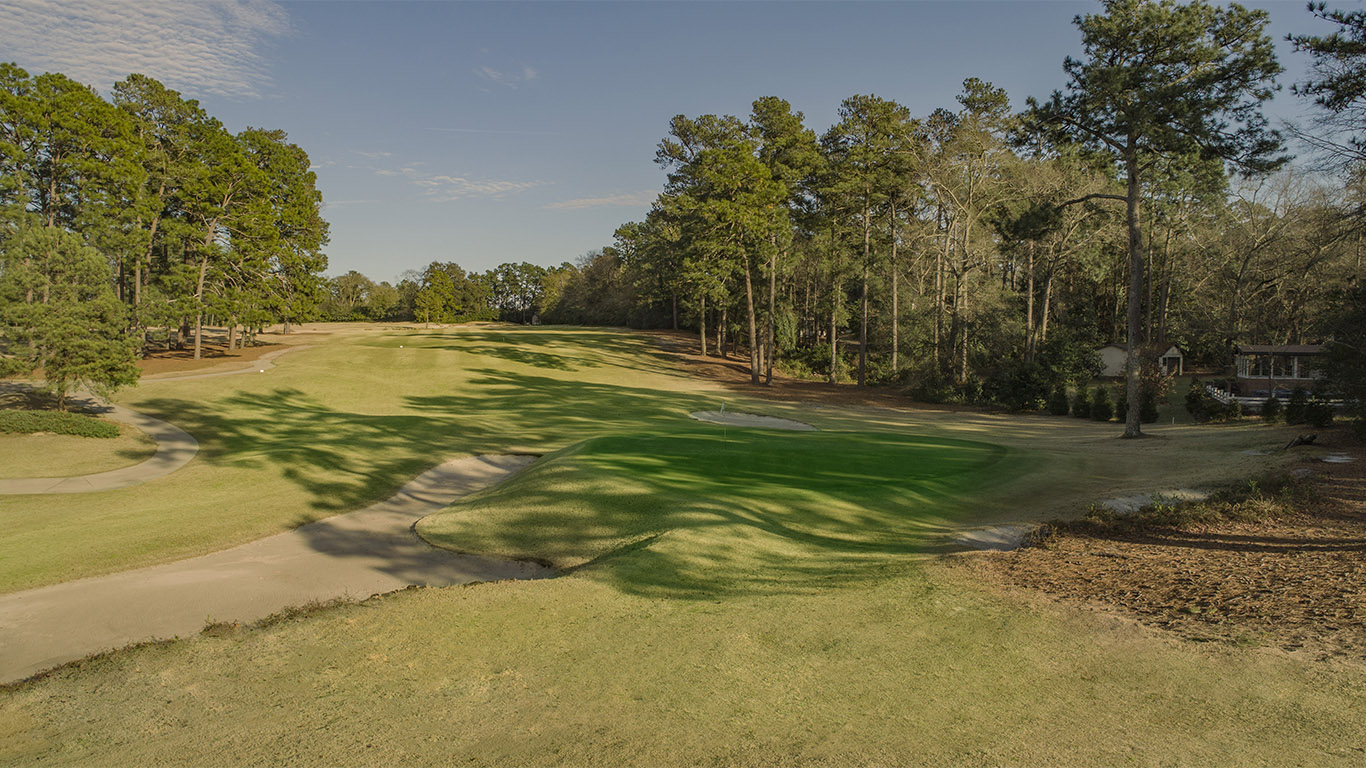
The view from behind the 10th green shows the slope of the terrain
Still, Aiken remains playable for all. Thanks to generous fairways and 17 greens that accept running approaches, Aiken doesn’t dictate the way you play it. Furthermore, its firm-and-fast conditions allow every shot in a golfer’s arsenal to be used. Unlike the area’s other public courses, which for the most part ask yes-or-no questions, Aiken requests an elaborate essay, crafted in each player’s particular style.
Brilliantly routed by Ross and Ingles then renovated by a man with no experience, Aiken GC is one of the treasures of American golf. It’s McNair’s homemade recipe of southern soul food, which golfers can taste nowhere else.
For golf fans who want to bring home a piece of this course, we offer a collection of Aiken photography prints shot by the Fried Egg Golf team available in our Pro Shop.
Sign Up for The Fried Egg Newsletter
The Fried Egg Newsletter is the best way to stay up to date on all things golf. Delivered every Monday, Wednesday, and Friday for free!


 by
by 
